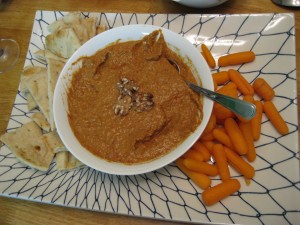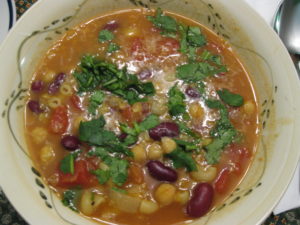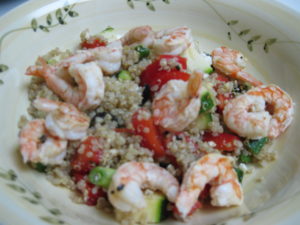
It is critical to take time before you start a training program to assess the status of your life and to figure out how the running, racing, recovery, and therapy will fit into your weeks. Once Chrystal understood the parameters of the first stage of the program, she ruthlessly organized her life to make it work. Take a look at Chrystal’s blog to learn how to do it right.
Chrystal and I also had to work on two other important areas before we got to the running part: (1) Goal alignment and (2) Building faith in the program.
1. Goal setting – defining what ‘fast’ means
Fast can be defined in many different way. Does it look like the girls doing wind sprints on the soccer field, women running smoothly ahead of you in a 10k race, or sprinters powering over 100m distances? Chrystal gave this some thought and concluded that she could call herself fast once she had executed a sub-60 minute 10k result. This definition gave both the athlete and the coach clear direction to build a program to deliver this specific result.
2. Faith in the program
From the beginning, Chrystal called me ‘one of the fast people’. I wasn’t sure if she was going to let me in and engage with me as her coach. We talked a lot, I shared with Chrystal my belief that the challenges she faces are similar to the challenges I have faced and continue to face in life and as a runner. I understand the battle and I ferociously believe that she can win it. One key element to her success is her coach…I know what it takes to win this one.
Sustained, consistent running over a 10-12 week period will deliver results. Transforming into a strong, smooth runner does not happen with only 2 runs per week and it does not happen with sporadic training patterns. Each of Chrystal’s weeks must be structured with the right amount of mileage (total miles and # runs), a longer run, and a challenging workout day at a level which will push her but not to the point of breakdown. As we move forward, I will try to provide context and direction which should help Chrystal understand the rationale for the training and what the training results mean.
What is working:
Measurement: Using the miCoach system, Chrystal can see for the first time just how far and how fast she is running. As the data accumulates, she will see how she is improving and how different elements of her life may or may not impact her daily running performance.
Foundation of easy running: Over the past four weeks, Chrystal has built back up to four runs per week (most are 7 km in length) including a longer 11-12 km run on the weekend. Her weekly mileage has been 30-35 km. Based on our discussions at the start, I understood that Chrystal was historically more flexible with her running in January and February to accommodate the poor weather and footing. In past years, during these weeks she focused on indoor soccer and bootcamp rather than running. This year, she was asked to start building her running base earlier so that she would have the strength to add the challenge of speedwork in March when the spring weather arrived.
Watch-outs:
We need to keep alert for physical and mental signs that the stressload and workload are too much. Chrystal has awesome drive. I think she could plow through any obstacle, but working harder isn’t the correct way to run fast.
Frustration management is important. Emotional reactions to slow days and lonely workouts need to be captured, beaten with data, and put in a box. Chrystal’s Makeover journey all started because of her reaction to a solid 66 minutes result at the Bluenose 10k in 2010. She was annoyed with this result. @#!*#! – she wanted to break 60 min…apparently everyone else was running faster. But hold on a minute – where they all faster? A search of the 2010 Bluenose 10k results tells a very different story:
Chrystal placed 1515 overall in the race out of 2321 finishers.
Chrystal was the 819th women across line out of 1460 female finishers.
Chrystal was 178 in her age group consisting of 346 women.
Do the math. The results actually indicate that Chrystal was ‘average’, not slow!
To help Chrystal and all runners keep perspective on our running performance we should consider many factors when assess our daily performance including recovery from the run the day before, sleep patterns, and overall stress load, in addition to data such as pace, speed, and distance. I don’t see this as looking for excuses but rather a reality check. Including these details in our training logs will help us all get a realistic sense of how things are going at that particular point in the training program when take a moment to review.
What comes next:
Weekly speedwork session. This interval workout will push her fitness and get Chrystal comfortable running at 6 min/km (and faster!) pace by the time the 2011 Bluenose 10k arrives.
Injury prevention / recovery strategies. With Chrystal’s jam-packed life, we may need to take runs out of the schedule to give her time to recover or to simply breathe. She could start planning massage and recovery time into her schedule. So far, she has taken care to maintain boot camp and soccer to stay connected with her support network.



 tually, he’s been around for a few years but they made it official six weeks ago). She brought this dip with her and generously allowed me to keep the leftovers (I may have strong-armed her a bit).
tually, he’s been around for a few years but they made it official six weeks ago). She brought this dip with her and generously allowed me to keep the leftovers (I may have strong-armed her a bit).








 Current Issue
Current Issue Previous Issue
Previous Issue Prior Release
Prior Release
